|
The Management Information Service (SIG) was created at the
same time as the Communications and Informatics Service
(SCI), emerging from the meanwhile extinct Department of
Communications and Informatics. This new strategic
orientation is the result of INESC Porto Board decision,
acknowledging information as the weakest link in our
organisation, to privilege a team development model,
dedicated to the construction of a platform for decision
support in INESC Porto based on integrated information
 This
is why the supervision of the SCI, as a crucial element of
support to the infra-structures of communication of data, is
now the responsibility of José Carlos Caldeira, while SIG is
now Vladimiro Miranda’s. This
is why the supervision of the SCI, as a crucial element of
support to the infra-structures of communication of data, is
now the responsibility of José Carlos Caldeira, while SIG is
now Vladimiro Miranda’s.
The objective was to let the collaborators and services
know that the missions are different and that the means to
accomplish them must be distinct. SIG was warned that the
whole conception and development should be centred in the
service to people and that the whole technological option’s
major concern should be users comfort.
While SCI major concern should be technology (including
security, redundancy, speed of communication, the robustness
of the physical subsystems, etc.), SIG should make sure the
developed solutions privilege criteria of usability and of
increase of efficiency in accessing information, data
integrity, aesthetics and straightforwardness.
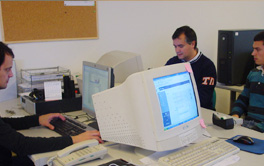 So,
what should matter the most is whether or not these
solutions please the users. While SCI, with its high
competence, must be an invisible service, SIG should be
something like a friendly service. So,
what should matter the most is whether or not these
solutions please the users. While SCI, with its high
competence, must be an invisible service, SIG should be
something like a friendly service.
This has implications not only at the level of options
but also at the level of the personal relationships the SIG
members must establish with the rest of the collaborators at
INESC Porto.
SIG general goal is the development of an environment
that, sooner or later, will be called “INESC Porto
information system”, which will be global and integrated as
a substitute for the rather independent and isolated
subsystems that still exist today. The key factors will be
the verification of productivity increase in parallel with
user satisfaction.
 The
team The
team
SIG team is composed of José Carlos Sousa, in charge of the
service since its creation; António Carlos Sá, on the
service since September 2005; Pedro Barbosa, trainee, on the
service since October 2005; Ruben Moreira, trainee,
developing the project “Implementation of tools in Project
Management”, on the service since March 2006.
SIG elected the following key-words: Automation,
Integration, Sharing and Collaboration.
In the practical implementation of this concept, some
works were developed in 2005, such as the Time Clock and
some modules for the dematerialisation of workflow. For
such, two Units were contracted (with teams from the
Information and Communication Systems Unit and the
Manufacturing Systems Engineering Unit, led by José Correia
and António Correia Alves) for specification and execution
of parts of the work, in an internal consortium that proved
to be an excellent solution. And, instead of the creation of
enlarged committees of users, the choice has been direct
contacts with the services and people potentially affected
by the systems to be implemented.
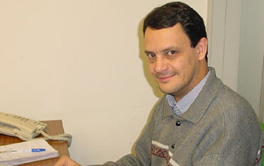 The
Board sent out the following directive: the users’
committees, despite their good intentions and merits, have
already demonstrated that they generated consensus opinions
resulting from the concession of each participant; as a
consequence, the end item would not please anyone but there
was no more margin of independent critic in the institution,
because everyone would be committed to the solution. Thus,
SIG was oriented towards the discussion of solutions and
their submission to the users’ critics, in successive
phases, including the commissioning of BETA versions of the
systems developed, instead of creating solutions with the
users’ commitment in its conception. Apparently, this
approach has had a very positive acceptance and no
complaints about the developed products have arisen, on the
contrary. The
Board sent out the following directive: the users’
committees, despite their good intentions and merits, have
already demonstrated that they generated consensus opinions
resulting from the concession of each participant; as a
consequence, the end item would not please anyone but there
was no more margin of independent critic in the institution,
because everyone would be committed to the solution. Thus,
SIG was oriented towards the discussion of solutions and
their submission to the users’ critics, in successive
phases, including the commissioning of BETA versions of the
systems developed, instead of creating solutions with the
users’ commitment in its conception. Apparently, this
approach has had a very positive acceptance and no
complaints about the developed products have arisen, on the
contrary.
The following sections present the main guidelines of the
Service for 2006, as reported by José Carlos Sousa,
responsible for the SIG,
 Workflow Workflow
The development of workflow solutions will continue to be
extremely important in our performance. In articulation with
the work group created for the effect, we intend to continue
with the specification and modeling of the INESC Porto’s
administrative workflow in a progressive way. The
implementation of these processes in the Ultimus tool
(bpm/workflow) will enable new procedures with a consequent
increase in the use of available resources.
In the procedures with human intervention, the use of
electronic forms instead of the paper documents will ease
the filling of the form (for example: automatic calculation
of daily subsistence allowances); reduce errors in the
filling (for example: filling of mandatory fields); render
data available for a later check (for example: offer the
data of the calls for fellowships in the website), drastic
reduction of the time spent on document transfer among the
intervening persons).
 Regarding
the interaction between systems, we aim at an effective
integration with the different systems of database
management (SGBD) and their instances, as well as several
existing applications (for example: accountancy, human
resources, finances, projects, etc.). Considering that one
of the goals is Write Once, Read Many, the priority will now
be the integration with the SAP, in a way as to use the
information it provides and to automatically or
semi-automatically update its data (through human
intervention). Regarding
the interaction between systems, we aim at an effective
integration with the different systems of database
management (SGBD) and their instances, as well as several
existing applications (for example: accountancy, human
resources, finances, projects, etc.). Considering that one
of the goals is Write Once, Read Many, the priority will now
be the integration with the SAP, in a way as to use the
information it provides and to automatically or
semi-automatically update its data (through human
intervention).
The experience, technical and organisational skills
acquired possess a high potential of value in the market,
for which INESC Porto is already exploring them as to the
way of consulting, namely in similar institutions. The
service can also be required to explore this aspect because
it has know-how in implementation, automatisation and
integration of the work processes in the institution.
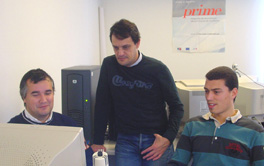 Integrated
implementation of a new Web/Intranet concept Integrated
implementation of a new Web/Intranet concept
Although our
current website and our Intranet portal have a Content
Management System (CMS) developed internally and with
different aim, our demand has become noticeably bigger and
the current system has some restraints we intend to
overcome.
In view of an increase of cooperation and sharing of
knowledge, we are working on a content management system
that will enable: a more efficient research of its content;
more collaborators involved in the insertion and update of
content; control of the quality and internationalisation of
the contents produced; the use of different types of
workflow in the publication of contents and a high level of
usability.
To stimulate and simplify the publication of contents,
one of the objectives of the system in question is Write
Once, Publish Everywhere, this is, a given content can be
presented in different formats in several places at the same
time and in an automatic way; for example, BIP can appear in
a project, in a given unit or service and even in the
website itself.
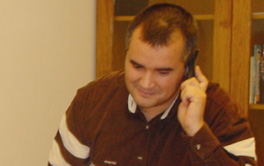 The
integration in the content management system of the website
with the Intranet portal is also important, providing for a
single entry point in INESC Porto information system (which,
in an initial stage, can only be of connections to several
tools). Thus, it simplifies the search for information,
avoids its doubling and it maintains a bigger surveillance
and thoroughness mainly in the external content. The
integration in the content management system of the website
with the Intranet portal is also important, providing for a
single entry point in INESC Porto information system (which,
in an initial stage, can only be of connections to several
tools). Thus, it simplifies the search for information,
avoids its doubling and it maintains a bigger surveillance
and thoroughness mainly in the external content.
This is achieved because the information is distributed
physically (structured) or logically (non structured) in a
single tree and any content is regularly visited. In this
integration, an authentication that determines the level of
access to contents is necessary, which calls for the
development of devices that are adequate to security level.
We should also mention that this system will only offer a
structure and a set of functionalities to simplify the
content management. The quality of the contents is still a
determining factor for adding value in our institution, and
for such we count on everyone, as usual.
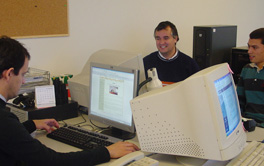 Cooperation
in the design of units and services websites Cooperation
in the design of units and services websites
Considering all matters referred to above, we will support
the units, services and projects in the design of their
websites when necessary, providing a structure in the
content management system with common nuclear
functionalities in a ready-to-use format that requires an
initial parameterisation.
Besides the work described, SIG has other initiatives,
namely the development of the concept of INESC Porto’s
database for the management, where the objective is to
structure a model of integration of the databases and the
proposition of a model for the administration of database
management systems (SGBD) materialized in a service offered
to the units, the development of application modules to
support the internal management functions, in the
Publications Management (SACA) and in the Project
Management; the coordination of a work group for the
documentary management with specification on documentary
management and digital archive with respective
implementation.
SIG also takes care of the maintenance of the current
website and Intranet portal during the time needed to
implement the new solution. It also maintains all the tools
related with management, such as Publications Management
(SACA), Reserve Management, Human Resources Management, BIP
among others.
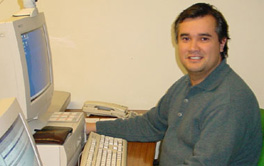 Finally,
we should highlight the fact that SIG will maintain its
interest in gradually improving every system, trying not
just to meet the expectations but, above all, to overcome
them. Finally,
we should highlight the fact that SIG will maintain its
interest in gradually improving every system, trying not
just to meet the expectations but, above all, to overcome
them.
SIG would like to take this chance to thank everyone who
has cooperated with the Service. José Carlos Sousa assures
“We don’t want you to have any doubts…you can really count
on us”.
<< Previous
| Next >>
|


 This
is why the supervision of the SCI, as a crucial element of
support to the infra-structures of communication of data, is
now the responsibility of José Carlos Caldeira, while SIG is
now Vladimiro Miranda’s.
This
is why the supervision of the SCI, as a crucial element of
support to the infra-structures of communication of data, is
now the responsibility of José Carlos Caldeira, while SIG is
now Vladimiro Miranda’s.  So,
what should matter the most is whether or not these
solutions please the users. While SCI, with its high
competence, must be an invisible service, SIG should be
something like a friendly service.
So,
what should matter the most is whether or not these
solutions please the users. While SCI, with its high
competence, must be an invisible service, SIG should be
something like a friendly service.  The
team
The
team The
Board sent out the following directive: the users’
committees, despite their good intentions and merits, have
already demonstrated that they generated consensus opinions
resulting from the concession of each participant; as a
consequence, the end item would not please anyone but there
was no more margin of independent critic in the institution,
because everyone would be committed to the solution. Thus,
SIG was oriented towards the discussion of solutions and
their submission to the users’ critics, in successive
phases, including the commissioning of BETA versions of the
systems developed, instead of creating solutions with the
users’ commitment in its conception. Apparently, this
approach has had a very positive acceptance and no
complaints about the developed products have arisen, on the
contrary.
The
Board sent out the following directive: the users’
committees, despite their good intentions and merits, have
already demonstrated that they generated consensus opinions
resulting from the concession of each participant; as a
consequence, the end item would not please anyone but there
was no more margin of independent critic in the institution,
because everyone would be committed to the solution. Thus,
SIG was oriented towards the discussion of solutions and
their submission to the users’ critics, in successive
phases, including the commissioning of BETA versions of the
systems developed, instead of creating solutions with the
users’ commitment in its conception. Apparently, this
approach has had a very positive acceptance and no
complaints about the developed products have arisen, on the
contrary. Workflow
Workflow Regarding
the interaction between systems, we aim at an effective
integration with the different systems of database
management (SGBD) and their instances, as well as several
existing applications (for example: accountancy, human
resources, finances, projects, etc.). Considering that one
of the goals is Write Once, Read Many, the priority will now
be the integration with the SAP, in a way as to use the
information it provides and to automatically or
semi-automatically update its data (through human
intervention).
Regarding
the interaction between systems, we aim at an effective
integration with the different systems of database
management (SGBD) and their instances, as well as several
existing applications (for example: accountancy, human
resources, finances, projects, etc.). Considering that one
of the goals is Write Once, Read Many, the priority will now
be the integration with the SAP, in a way as to use the
information it provides and to automatically or
semi-automatically update its data (through human
intervention). Integrated
implementation of a new Web/Intranet concept
Integrated
implementation of a new Web/Intranet concept The
integration in the content management system of the website
with the Intranet portal is also important, providing for a
single entry point in INESC Porto information system (which,
in an initial stage, can only be of connections to several
tools). Thus, it simplifies the search for information,
avoids its doubling and it maintains a bigger surveillance
and thoroughness mainly in the external content.
The
integration in the content management system of the website
with the Intranet portal is also important, providing for a
single entry point in INESC Porto information system (which,
in an initial stage, can only be of connections to several
tools). Thus, it simplifies the search for information,
avoids its doubling and it maintains a bigger surveillance
and thoroughness mainly in the external content.  Cooperation
in the design of units and services websites
Cooperation
in the design of units and services websites Finally,
we should highlight the fact that SIG will maintain its
interest in gradually improving every system, trying not
just to meet the expectations but, above all, to overcome
them.
Finally,
we should highlight the fact that SIG will maintain its
interest in gradually improving every system, trying not
just to meet the expectations but, above all, to overcome
them.